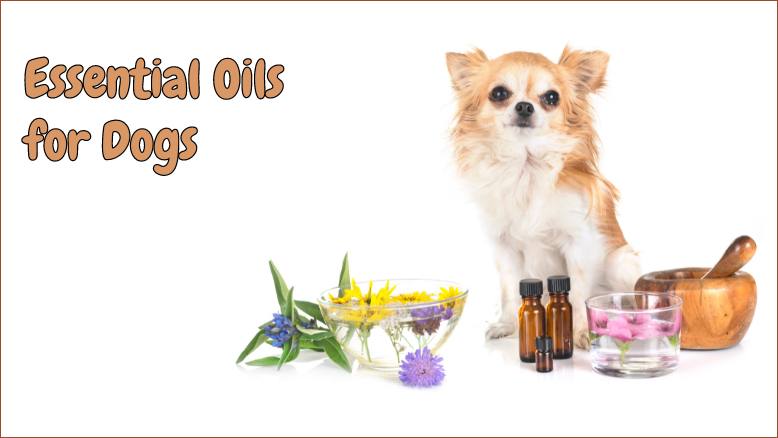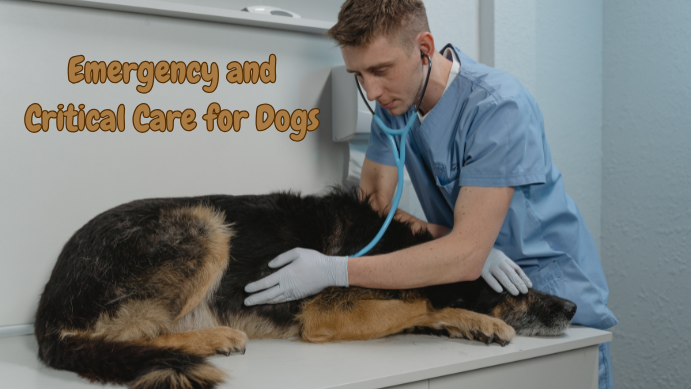
What Are Essential Oils?
Essential oils are concentrated extracts derived from plants. These potent liquids capture the essence, or unique fragrance, of their source plants.
Essential oils have been used for centuries in various cultures for their therapeutic properties. They can be extracted from flowers, leaves, bark, or roots through processes like distillation or cold pressing.
Which Essential Oils Are Safe for Dogs? Some popular essential oils include lavender, peppermint, eucalyptus, and tea tree oil. These oils are often used in aromatherapy, personal care products, and natural remedies.
Essential Oils Safely for Your Furry Friend
When using essential oils for dogs, safety is crucial due to their heightened sense of smell and sensitive skin.
Essential oils can relieve anxiety, repel insects, and soothe skin conditions when used correctly. Always dilute essential oils with a carrier oil like coconut or olive oil, using one drop of essential oil to 50 drops of carrier oil.
Ensure the oils, such as lavender, chamomile, and frankincense, are safe for dogs. Monitor your dog for allergic reactions or discomfort, such as itching, redness, or respiratory issues, to ensure their safety.
Safety and Risks of Essential Oils for Dogs
Essential oils can help dogs but also have risks. Some oils like tea tree, pennyroyal, wintergreen, and pine are toxic and can cause vomiting, drooling, tremors, and liver damage.
Only use oils that are safe for dogs and make sure the area is well-ventilated. Keep oils away from your dog’s eyes, ears, nose, and genitals.
Always talk to a vet before using any new essential oils to ensure they don’t interfere with your dog’s medications or health conditions. Using essential oils carefully is key to keeping your dog safe and healthy
How to Use Essential Oils Responsibly and Effectively on Your Dog
To use essential oils responsibly and effectively on your dog, adhere to these guidelines:
Research and Education:
Educate yourself about which essential oils are safe for dogs and their specific benefits. Not all oils are created equal, and understanding their properties can help you make informed choices.
Dilution:
Always dilute essential oils with a carrier oil. This reduces the risk of skin irritation and ensures your dog reaps the benefits without adverse effects.
Patch Test:
Before applying any essential oil blend on a larger area, perform a patch test. Apply a small amount to a limited area and wait 24 hours to check for any adverse reactions.
Aromatherapy Use:
For aromatherapy, use a diffuser to disperse the essential oil in the air. Ensure the space is well-ventilated and your dog has the option to leave the area if they find the scent overwhelming.
Topical Application:
When using essential oils topically, focus on areas your dog cannot easily lick. The back of the neck or the base of the tail are good options.
The Pros and Cons of Using Essential Oils for Dog Aromatherapy
Pros:
Natural Remedies: Essential oils offer a natural alternative to synthetic medications for various conditions, such as anxiety, skin irritations, and minor aches.
Cost-Effective:
A small bottle of essential oil can last a long time, making it a cost-effective solution for many dog owners.
Versatility:
Essential oils can be used in multiple ways, from diffusing and topical applications to creating homemade sprays.
Cons:
Toxicity Risks:
Some essential oils can be highly toxic to dogs, requiring careful selection and usage.
Allergic Reactions:
Dogs can have allergic reactions to certain oils, leading to skin irritation or respiratory issues.
Requires Knowledge:
Using essential oils safely requires a good understanding of each oil’s properties and potential risks.
What Every Dog Owner Should Know About Essential Oils and Their Pets
Every dog owner should be aware that not all essential oils are safe for pets. It’s crucial to differentiate between beneficial oils and those that are harmful. Understanding your dog’s health status is essential before introducing essential oils. Age, breed, weight, and medical history can all influence how your dog might react to essential oils.
Always store essential oils out of your dog’s reach. Dogs are curious by nature, and ingesting essential oils can lead to severe health problems. In case of accidental ingestion, contact your veterinarian immediately.
Which Essential Oils Are Bad for Dogs?
Several essential oils are known to be harmful to dogs and should be avoided:
Tea Tree Oil:
Even in small amounts, tea tree oil can cause severe toxicity in dogs, leading to symptoms like lethargy, tremors, and skin rashes.
Pennyroyal Oil:
This oil is highly toxic and can cause liver failure and death in dogs.
Wintergreen Oil:
Contains methyl salicylate, which is extremely toxic to dogs, potentially causing gastrointestinal upset, respiratory distress, and neurological issues.
Pine Oil:
This can lead to irritation of the mucous membranes, vomiting, and central nervous system depression.
Citrus Oils:
Oils such as lemon and orange can cause vomiting, diarrhea, and extreme sensitivity to light.
Conclusion
By understanding the proper use of essential oils and recognizing which ones to avoid, you can enhance your dog’s well-being while ensuring their safety. Always consult with a veterinarian before starting any new essential oil regimen for your furry friend.






